Artisanal blacksmiths in Malaysia build up strong following with traditional skills, modern techniques
BIDOR, Perak: In the storeroom of Kwong Yuan Loong smithy, stacks of blades were wrapped in newspaper, the odor of machine oil still fresh after workers applied a blanket to prevent the loftier-carbon steel from rusting.
The sounds of hammering reached through fifty-fifty with the metallic shutters rolled downward, equally Chin Pin Yon, 79, sat downwards to recount the history of the smithy founded by his father in the belatedly 1920s.
"Dorsum so, the workshop was just a shop in the Chinese village. And we were forging our cut implements there until nosotros moved out in 2000."
"The reason was because of the dissonance. The identify became a new village, and people were living next door, and then the hammering got very loud," said Chin, himself suffering from fractional deafness afterward over 50 years at the forge.
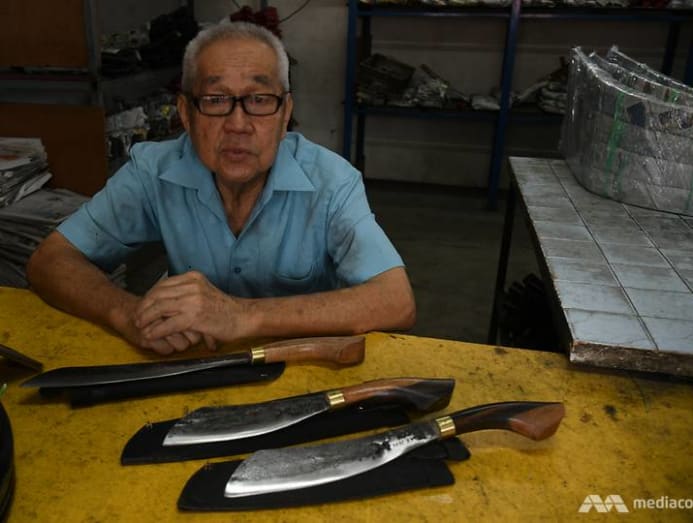
If the make "Kwong Yuan Loong" does non ring any bells, the moniker "Bidor parang" might, along with the crossed swords logo and toponym "Bidor" etched on their duku candung and golok knives (variants of the parang).
Parang candung, a bract design originally from Sarawak, is popular both locally and overseas as an outdoor implement, and more so the Bidor-made parangs, equally an affordable and reliable cutting tool.
For people who use parangs, either in the agriculture industry or the outdoors, Bidor in Perak is synonymous with parang making. And information technology is non uncommon for walk-ins to plow up at Kwong Yuan Loong to specifically purchase their parangs.
Nevertheless, the smithy, at present operating as a factory, makes more than than just parangs.
"Actually we make agronomics cut tools, similar blades for borer rubber trees, others for harvesting bunches of oil palm fruit, and besides durian knives," said Chin.
READ: Preserving Malaysia'southward traditional houses, i colonnade at a time
Beyond Malaysia, countless traditional blacksmiths toil to make inexpensive tools and agricultural implements for their local communities.
Kwong Yuan Loong used to be i such smithy starting out, and while it nonetheless keeps a focus on traditional blacksmithing, it has as well incorporated new technologies and product methods to keep in stride with the times.
The strong need, both from local and international clients, is a testament to the quality of its products.
Meanwhile, the industry has also witnessed the emergence of new blacksmiths who take pride in producing high-end, artisanal knives with new techniques and materials. One such maker is Faris Zulkifli's Fursan Blades in Kampung Melayu Subang, Selangor.
Of these 20-odd modern artisans beyond Malaysia, a few accept as well garnered an international following amid collectors and outdoor enthusiasts.
BIKING FROM PERAK TO PAHANG
Initially, Kwong Yuan Loong did most of its business in Pahang, although orders would also come in from other states.
"In that location's a lot of agriculture going on in Pahang, and then I would ride a motorbike there from Bidor ... we did not have a car, and so I'd carry almost l condom tapping knives at one become.
"One hardware store would have five to 10 knives or so. After you sold to a few shops, yous'd have already finished your load, and so we slowly congenital up from there," said Mentum.
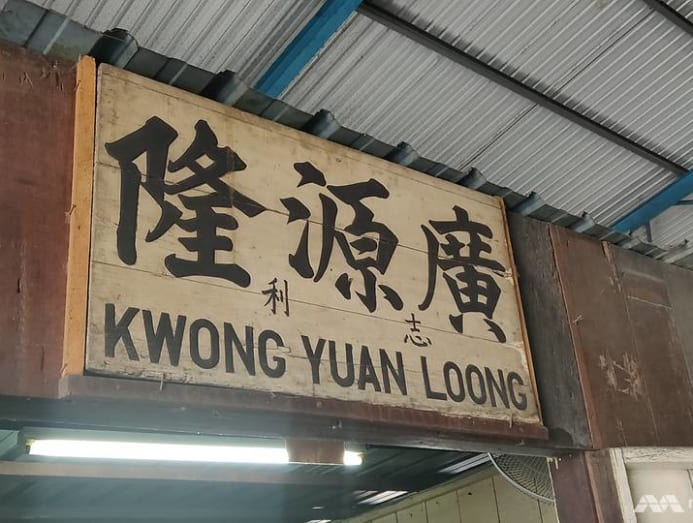
Chin said the smithy's blades only carried the crossed swords trademark back in his father'due south time.
"People wouldn't know where to buy parang, so when I took over, I knew that if we wanted to market our product better, we must put the 'Bidor' name every bit well," Chin recalled.
Equally the knives became more popular, some were likewise exported overseas.
"A lot of users overseas were happy with the knife, according to the feedback, merely they didn't know where it's from, and then our exporter asked us to add the 'Malaysia' carving. Now our virtually famous knife is the duku candong, and when the users come up to Malaysia, they know where to go," he added.
READ: 'I hope the deceased will receive these items' - Penang paper figure apprentices passionate nearly their craft
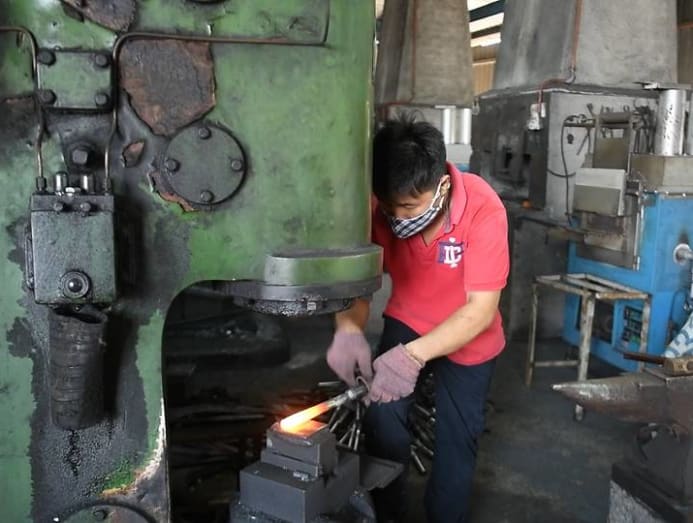
Apparently paw-forged knives were a big hit with Western visitors, and some came over to test the factory's blades' reliability and force.
"Some tests even involved dropping the blades from a height to see whether they would suspension, and the visitors too came to see the states hand-forging the blades," he added.
The factory works mainly with an outdoors store in Penang to market their parangs overseas.
"It started from there, and we get orders from both the Penang shop and individuals, but I can't take on too many orders otherwise our order book would be swamped," Foo Yoong Ming, who is Mentum's son-in-law, said.
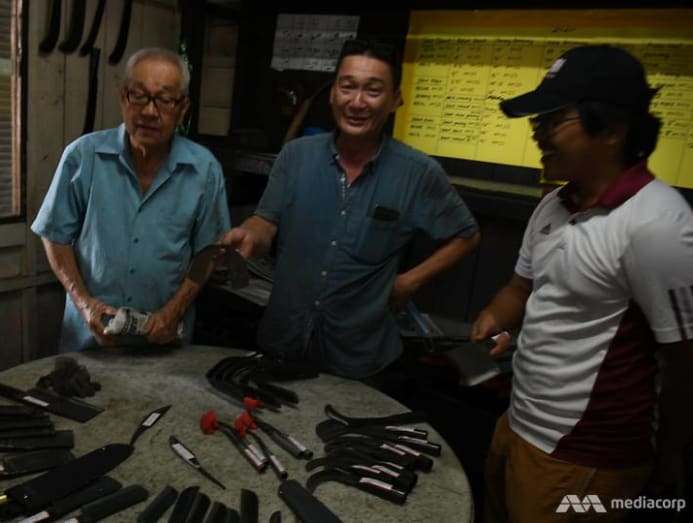
Amidst traditional parang makers, recycled leafage bound plates salvaged from vehicles were previously the preferred raw material which they could melt down and use. Land Rover leaf springs were traditionallyconsidered "the best".
Nowadays though, the factory uses imported steel plates which are mill-produced, which are of much higher quality than recycled vehicle parts.
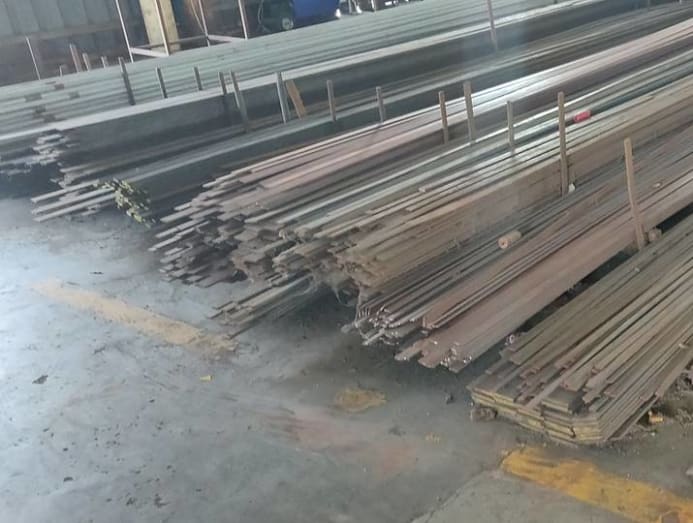
Part OF THE NEW Moving ridge
Meanwhile, over in the new workshop of Fursan Blades in Kampung Melayu Subang, Faris watched carefully as a slice of steel slowly heated up and glowed from a tedious ruby to a brilliant colour inside his cylindrical forge.
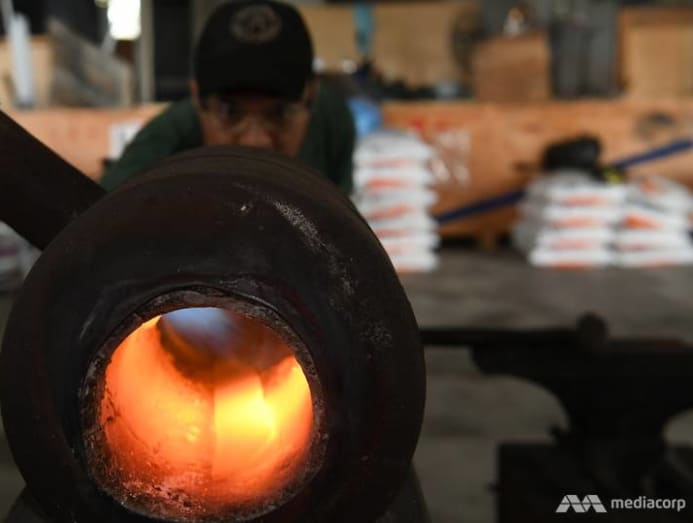
In one case it turned cherry-red red or so, he deftly carried out the at present-malleable steel slice, soft enough that he could hammer into his desired rough shape for a knife.
Information technology takes Faris a few rounds of heating and hammering for his steel piece to take the desired flatness.
Forging carbon steel, a very bones tool steel, yields knives with a "raw" and "traditional" look that appeals to fans of such.
READ: Prefer a lord's day bear or terrapin - Wildlife conservationists in Malaysia entreatment for donations to ride out COVID-nineteen impact
These days, however, at that place is more than demand from users for the modern "super steel" type of knives made of powder steel and high-stop stainless steel, which do non require forging and are less-decumbent to fault.
He makes mostly outdoor and everyday carry knives.
For these knives, Faris ordinarily employs the stock removal method, where he uses plates of steel sourced from a steel mill. Afterwards outlining the blade's profile and form on the steel plate, he takes the steel bar to a belt grinder and grinds away the backlog metal until he attains his desired shape and profile.
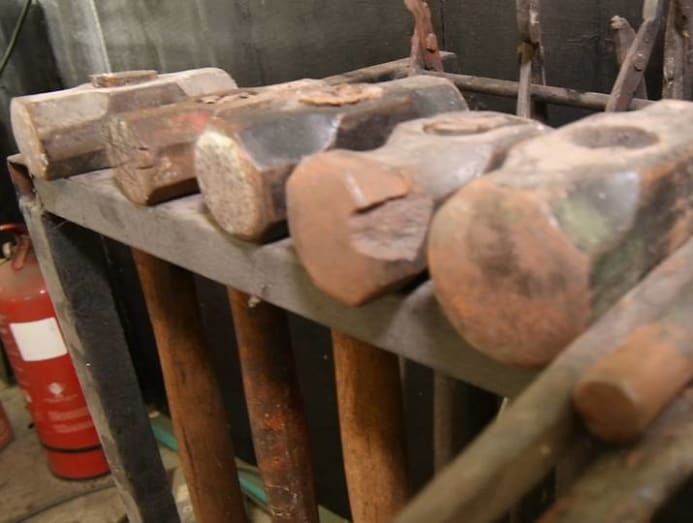
"You lot grind the bevels and other details, and then yous transport it for heat treatment to get the desired hardness then you finish it with polishing and so on," he explained.
READ: COVID-19 lockdown stimulates Malaysia'south retail investor blast
Faris, whose involvement in blade drove him to become a professional chef, started Fursan Blades nearly vii years back.
Starting with chip metal at first, Faris fabricated many mistakes earlier learning how to brand blades properly from other knife makers who were working with college-end steels.
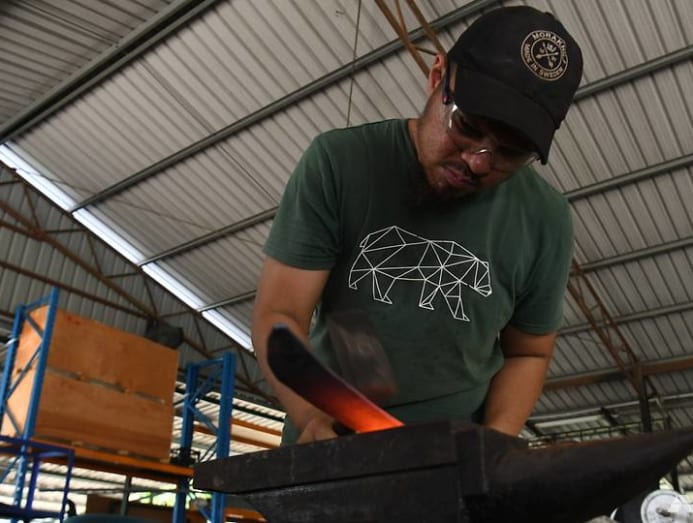
A normal day at work for Faris means making himself a loving cup of java and so planning out the day'due south tasks, from cut out the profiles for perhaps 10 knives at a time.
"I'll be grinding the plates downward all the way for iii to 4 hours with these two machines, and if whatever of the knives are prepare for their heat treatment, I'll send them out."
"I'll have more than 20 orders easily at any time that I need to consummate, and about 40 to fifty pieces which I finish in a month," he said.
Faris also does special custom orders such as swords for display, as well every bit kitchen knives as a nod to his culinary past.
"For customised kitchen knives with supreme steel and good grinds, I make them by drawing on my previous kitchen experience."
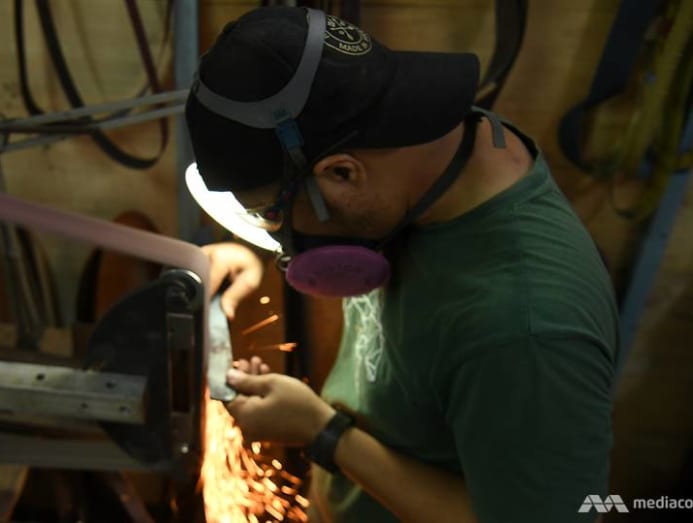
For Faris, it's important to know how to use a tool like a knife or parang before making the proper tool for it.
"Right now, I'one thousand also a student farrier (a blacksmith who works with horses) and I'd like to larn how to make the tools to alter the horse's shoes and how to exercise information technology."
"You have to train and understand the process before you endeavor to brand your own," he added.
THE NEED TO Go along Upward-TO-DATE
Both blacksmiths agreed that there is a demand to keep their knife making skills and processes upwards-to-date.
Kwong Yuan Loong's Chin, who has handed the factory'due south management to his son-in-police force over a decade back, felt that the factory would demand to improve on its artisanal bract making with modern technology.
"Take quenching the blade after heat-treating it, you tin't just go by your eye, yous besides demand instruments to read the temperature," he said.
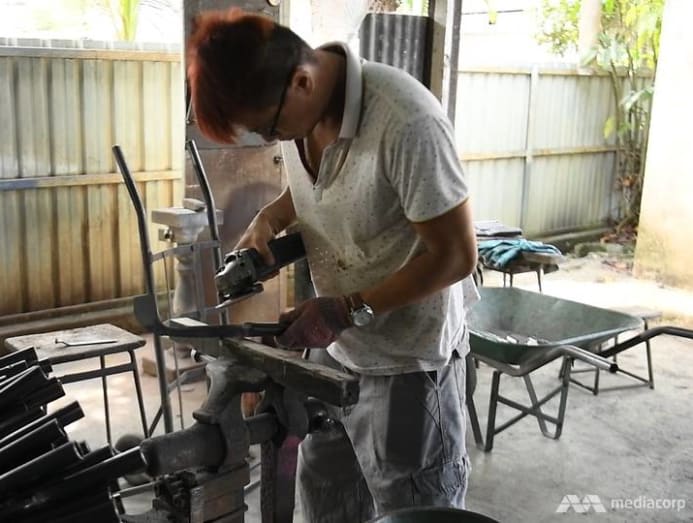
As well transitioning from recycled or scrap steel, Foo'due south son, Er Xian, 24, explained that the factory had besides gone on to use gas-powered forges instead of charcoal due to difficulties in sourcing the textile. While the workers still apply the finishing touches past hand, there are also power hammers to help with forging.
Foo, 54, told CNA that blacksmithing was something of a sunset industry.
"Just at the aforementioned time, people are also looking for artisan piece of work, so I effort to maintain hand-forging, simply I'm besides looking at increasing my mechanism and output," he said.
Notwithstanding, Mentum still wanted the younger generation to learn mitt-forging from experience. "Considering it'south not something you lot tin get from books."
READ: Fit for royalty - Malaysian Queen passionate about reviving Pahang handwoven cloth
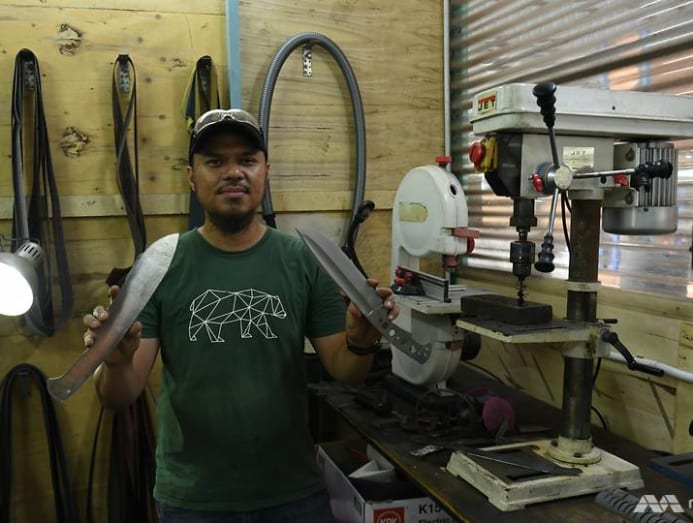
For Faris, what set modern knife makers apart from the traditional smiths was the clear documentation and scientific way of making blades.
Makers who utilise the mod approach will be able to tell the customer upfront what steel they are using, the metallurgical composition of the steel and how long the knife's sharpness is estimated to final.
"But since 2012, 2013, a lot of traditional pocketknife makers accept also been upgrading themselves, from modernising their forges to using better steels. I'd like to call back that we somewhat inspired them to take hold of up with the modernistic pocketknife industry."
Source: https://cnalifestyle.channelnewsasia.com/asia/malaysia-knives-bidor-kwong-yuan-loong-parang-fursan-blades-242086
0 Response to "Artisanal blacksmiths in Malaysia build up strong following with traditional skills, modern techniques"
Post a Comment